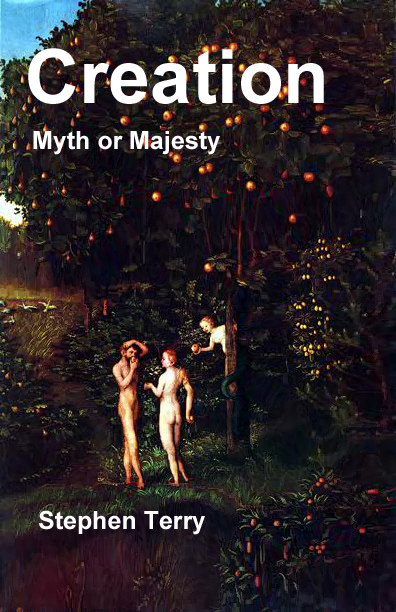
Stephen
Terry, Director

The
Seven Seals
Commentary
for the February 2, 2019 Sabbath School Lesson
 “I watched as the Lamb opened the first of the seven seals. Then
I heard one of the four living creatures say in a voice like thunder, ‘Come!’”
Revelation 6:1, NIV
“I watched as the Lamb opened the first of the seven seals. Then
I heard one of the four living creatures say in a voice like thunder, ‘Come!’”
Revelation 6:1, NIV
Our lesson title this week is a bit of a misnomer for
the lesson only looks at chapter 6 of Revelation which covers six seals. The
Seventh Seal is reserved for chapter eight. While the lesson indicates, in
harmony with Uriah Smith, that these seals represent sequential periods of
history, this is the same approach taken in regards to the previous narrative about
the Seven Churches in chapters two and three. In my commentary on the Seven
Churches, I have already provided evidence why this might not be so. Of course
if such linear reasoning here is intended to coincide with that earlier example
then there is, for the same reasons, the possibility of it being called into
question here as well. As we might acknowledge, if God exists beyond time and
consequently has the ability to manipulate time much as we are able to
manipulate the width, height and depth of objects in our dimension at will,
then the expectation of a linear progression based on historical epochs without
the text clearly saying so as it does in Daniel may be presumption on our part
as we attempt to impose our limited perspective on information we have received,
at best, second hand from someone whose ability to record what he was seeing was
constrained by his well of knowledge and experience.
Some might question why we should lend theological
credibility to anything written by a retired fisherman living in the first
century. The monk, Martin Luther, certainly had issues with it, refusing to
include it in the canon of his first German Bible. However, he later relented
and allowed its inclusion. I agree with that conclusion, even though its
inclusion has led to divergent schools of theological opinion on its meaning
and application. Perhaps any divisiveness that has resulted though is more a
problem associated with our reluctance to let go of a hobby horse once we have
begun to ride it. We carefully construct theological edifices believing that
our building methods are beyond refute and that our materials are so uniquely
singular that it should be apparent to all that our structure can be the only
true building, and that, being so, is the only perspective that has God’s
endorsement as the Truth. This is the “God-in-the-box” phenomenon. The box is
perfectly made to contain only the truth about God. But this becomes
problematic when we discover that everyone has a God-shaped box and they are
all shaped differently because they are constructed based on observation and
experience and no two individuals have identical tools to build with because of
these limiting factors. This does not even touch the
problem that God is actually beyond definition except to say alternatively that
God is ineffable. When we use words like omniscient, omnipresent, all-seeing
and all-powerful, we are tacitly stating exactly that. We can grasp the essence
of the problem with our limited perception of God by attempting to draw a
picture of infinity. Some might offer up a picture of a figure eight lying on
its side as an example, but it is not. It is only a symbol, a place holder, to
represent what we are unable to depict. Perhaps we can see how any claim to
have God and God’s will understood is naturally suspect and begs the question
are we substituting for God with an idol constructed in the image of our
vanity?
It is important that we realize these shortcomings when
we attempt to construct, in intricate detail, prophetic interpretations of all
that is to transpire. William Miller did this in the first half of the 19th
century and this resulted in the Great Disappointment of 1844 when the
predicted return of Jesus for his followers did not materialize. Many found
their faith shipwrecked on such rocky shoals, but some banded together under
the assumption that there was no flaw in the construct, only in its
understanding. Thanks to Hiram Edson, an alternative explanation was soon
offered that the date signified Jesus entering the most holy portion of the
heavenly sanctuary to begin the Investigative Judgment prior to the Parousia.
Some question this even today, but a detailed examination of the idea is beyond
the scope of this commentary. What is important to realize from that experience
is that it is possible to be very, very sure about what prophetic symbolism is
meant to convey in the Bible, yet be entirely wrong about what it means. Had
the early Seventh-day Adventist Church leaders been unwilling to alter their
God-shaped box in response to what Hiram Edson proposed to significantly
different dimensions, whether right or wrong in doing so, we would not be where
we are today. It is important therefore that we consider the benefits of not
locking ourselves into a historical timeline based on meanings that we choose
to apply to Revelation as opposed to maintaining the flexibility to admit we do
not have all the answers and may not, this side of the Parousia. Even John, who
witnessed all of this personally, likely did not have a complete understanding
of everything either, and simply recorded what he saw faithfully according to
what understanding he did have, trusting in God to make everything plain at the
right time and place as needed.
So do the Four Horsemen and the subsequent three seals
represent historical epochs? If one wishes to impose that meaning on the text,
a compelling case might be made based on proof texting that gleans similarly
worded text from other places in scripture as though they were definite
parallel prophecies, even though taken out of context both temporally and
literally. Adopting such may seem inviting to those who appreciate organization
and order as defining elements of their faith. However, doing so automatically
carries with it an assertion that such a perspective is the truth, the only
truth, and nothing but the truth. Pilate famously asked Jesus, “What is truth?”[i] In response, some
Christians might be tempted to quote Jesus’ statement found elsewhere, “I am
the Way, the Truth, and the Life.”[ii] But for over 1,700 years,
Christians have not even been able to agree on what that means. For all of that
time a battle has raged between Arians and Trinitarians over whether or not
Jesus is divine or simply another created being. This battle is being waged
even within the Seventh-day Adventist Church as of this writing and in spite of
the existence of a creedal Fundamental Beliefs statement voted by the
denomination in 1980 in favor of Trinitarianism. For a church that claims to be
the Remnant Church of Revelation, chapter twelve,[iii] we seem to have a hard
time determining what that means exactly when it comes to the details and so we
wage theological war with one another because we refuse to acknowledge what we
don’t know, claim to know more than we do, and choose not to recognize that God
is capable of far more than we are willing to allow.
In this, the Four Horsemen are apt representations of
the church in every age, for they comprise a summation of whom and what we are.
We see ourselves as mighty conquerors carrying the Gospel throughout the earth
as with the white horse. We are too often willing to wage the bloody war of the
red horse with those who differ from our praxis, not only against those who
practice non-Christian religions, but, and perhaps especially, against
Christians we differ with theologically. If we are impotent to carry our battle
to them physically because of distance or means, we then persecute them
economically, perhaps symbolized by the black horse, through economic sanctions
that reduce entire nations to poverty, famine and disease due to their
diminished financial ability to provide for their people as result of soaring
inflation making everything prohibitively expensive. Then when the pale-horse
death of millions come about as the result of the first three, we lose little
sleep over the multitudes of men, women and children we have swept into the
grave as a result of what we have done.
The implications of all of this may be represented by
the fifth and sixth seals which reveal the dead crying out for justice, and the
assurance that justice is coming. There will be a surprise one day when it is
revealed that Christians who oppress the poor and needy in order to have a
luxurious lifestyle that does not exist in most of the world discover that
simply claiming the name of Jesus is not a “get-out-of-jail-free” card, but
instead brings a greater accountability for what we have prioritized in life.
Like the Laodicean Church of Revelation, chapter three,[iv] wealth can blind us to
our shortcomings, perhaps even tempting us to believe that such prosperity
implies God’s endorsement of our indifference. It does not. But it is not too late;
otherwise there would be no point to the Revelation. John’s book assures us
that there is still hope, and Jesus is yet knocking at the door seeking
entrance into our lives.
